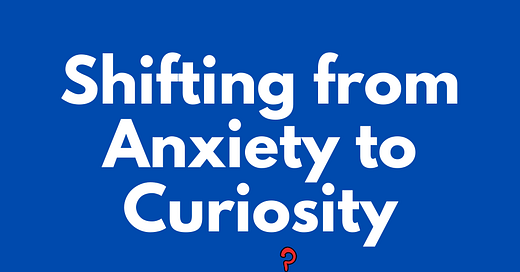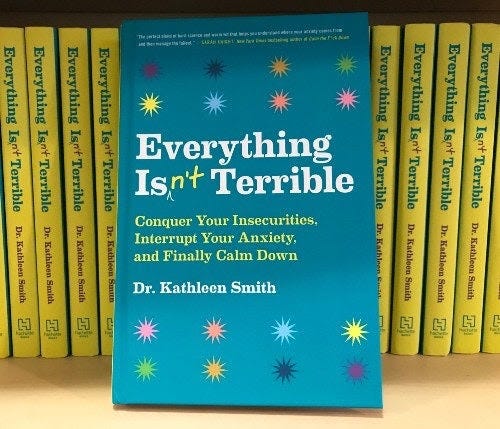When I’m catching up with a therapy client, I often ask them, “Where has it been hard to be curious?”
Where there is a lack of curiosity, you may find a great deal of anxiety. Because it’s hard to be curious about a kid who’s struggling in school. Or your marriage when you’re aggravated with your spouse. Or your parents when they always push your buttons.
It’s easy to see the anxiety in our intense worry or charged conflict, but anxiety can also disguise itself as boredom, disinterest, or a surface-level connection.
Curiosity is striving to know what someone thinks and to observe how they function, because you recognize that they are a separate person. When we assume we know what people think, or what they’re going to do, or what they should do, we do not give ourselves the opportunity to be curious. Nor do we give people the opportunity to surprise us.
And a lack of curiosity can look like:
Automatic, predictable patterns of functioning.
Emotional distancing in significant relationships.
Anxious focus on those we love.
Treating people like they’re an extension of yourself.
Increased sensitivity to the other’s anxiety.
Difficulty in being objective about one’s self and others.
It’s often easier to be curious about our friends than our family. Perhaps because it’s easier to treat our friends like autonomous humans who can navigate life’s challenges. We are a little less sensitive to their distress, so we can hang in the conversation without feeling the need to run away or completely take over. This can be much harder to do with a family member.
Think about your relationships with people in your family. Where is it hardest to be curious? What would it look like to attempt a shift from an anxious response to a more curious one?
Here are some examples.
Anxious position: Worrying about what to do with your parents as they age.
Curious position: Asking your parents how they want to spend their later years.
—————————————————-
Anxious position: Telling your spouse how to solve all their work problems.
Curious position: Asking your spouse about their challenges and successes at work.
—————————————————-
Anxious position: Worrying about when your kid will reach a developmental milestone.
Curious position: Observing how your child is growing or sharing with others how they’ve surprised you.
—————————————————-
Anxious position: Wondering if your grandmother doesn’t like your boyfriend.
Curious position: Asking your grandmother about her romantic life when she was younger.
—————————————————-
Anxious position: Complaining about out-of-control gossip at work.
Curious position: Observing communication patterns and considering how you want to operate.
—————————————————-
Anxious position: Avoiding a friend/family member because they are highly anxious.
Curious position: Playing around with regulating your own anxiety while talking to them.
When you try to move towards curiosity, you create opportunities to open up relationships that are reactive, predictable, or even boring. You create space to let people surprise you and let them be responsible for themselves. And you may also find that you are able to share more of your real self without worrying so much about the reaction.
So this week, I encourage you to listen to the great Ted Lasso, and be curious. Ask questions, and pay attention. When anxiety wants you to jump to conclusions, or turn on your autopilot, strive to know your own mind and the thinking of others.
News from Kathleen
For Forge Mag, I wrote about dealing with anxiety in relationships in this pandemic transition time.
For the Bowen Center, I interviewed faculty member Kathleen Cotter Cauley, MFT about stepping back into post-pandemic life.
Want to support my free newsletter? Buy me a coffee to keep the thoughts flowing.
Want to read more of my writing? You can read my weekly essay for Medium’s Forge Magazine, read old newsletters at my website, or buy my book Everything Isn't Terrible from Amazon, Barnes and Noble, Indiebound, or your local bookstore (best option).
Want a free anxiety journal? Calming Down & Growing Up: A 30 Day Anxiety Journal includes thirty daily prompts to help you reflect on and respond to your anxious behaviors. To receive a copy, just email me your receipt.
Follow me on Twitter, Facebook, or Instagram, or email me if you have questions about my therapy practice in Washington, DC, virtual Bowen theory coaching, or having me speak to your group.
Want to learn more about Bowen theory? Visit the Bowen Center’s website to learn more about their conferences and training programs.






This is such practical, down to earth, do-able wisdom. Thank you!